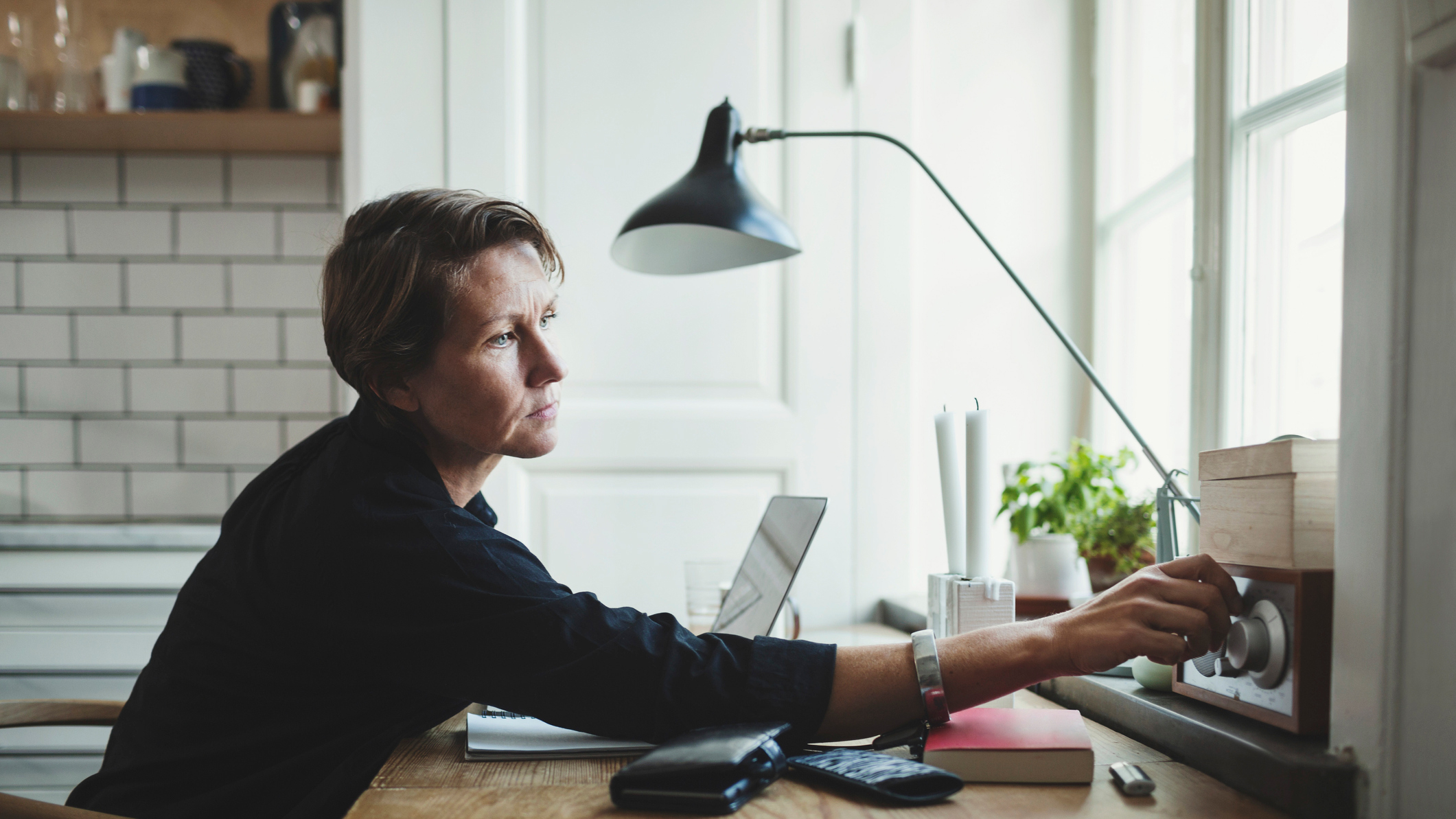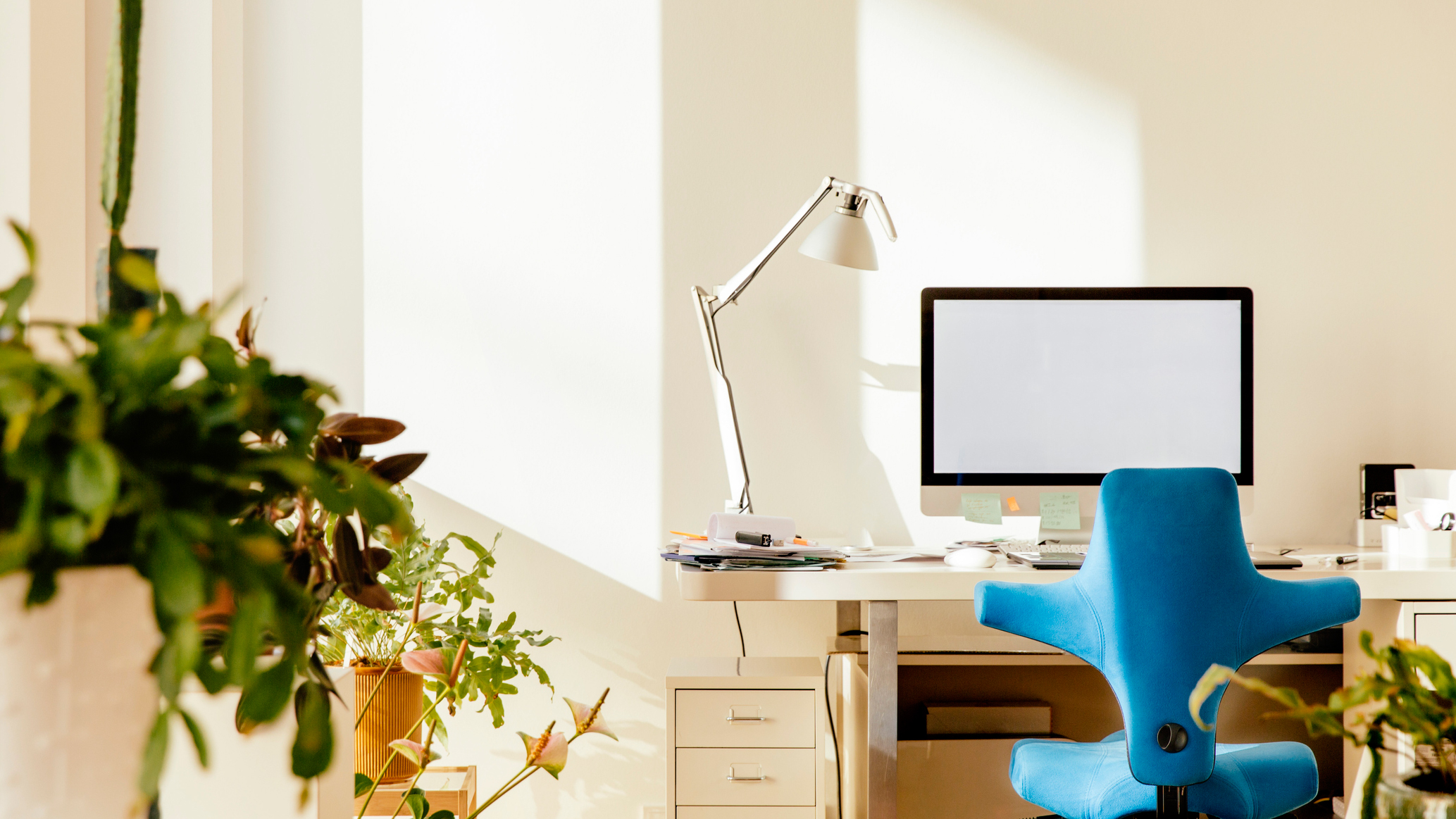How to beat eye strain when working from home – with a desk lamp
You've kitted out your home office with a chair, desk and monitor, but the right desk lamp is crucial to avoid eye strain


When the coronavirus pandemic first hit, many of us were forced to depart from our usual office routines and transition into working from home. As well as the best office chair models, which quickly came into high demand, people began ordering monitors, standing desks, ergonomic keyboards and all sorts of home office equipment.
However, you might have neglected one of the most important factors that will affect your health when working from home: the light.
The best desk lamps are incredibly important when it comes to working from home. Vision Direct polled 2,000 adults across the UK on their home office setups, and found some disturbing responses. According to the poll, 45% of responders said the room they spend the most of their time in has 'limited' natural light, which means people likely aren't getting their daily dose of vitamin D.

Considered the "sunshine vitamin", vitamin D has a big impact on our physical and mental health. It helps regulate the amount of calcium and phosphate in the body, which is essential to help develop and maintain strong bones and teeth.
Low levels of vitamin D are also associated with mental health disorders such as anxiety and depression according to research, which makes the sunshine vitamin all the more essential in lockdown.
The isolation that comes with not just the ongoing pandemic, but working from home in general, can leave us feeling vulnerable. As our only communication with our colleagues come through video calls instead of an office environment, it's more important than ever to keep those anxious or depressive feelings at bay.
We can't always change our living situation so we have access to natural light in an office environment, but you can simulate this lighting through using an SAD lamp. These lamps are designed to counteract the depressive effects of seasonal affective disorder (the titular SAD), which is sometimes known as "winter depression". However, the best SAD lamps can also be used to replicate natural light in an office environment.
Start your week with achievable workout ideas, health tips and wellbeing advice in your inbox.
Vitamin D is only part of the battle: the obvious risk to a dark office environment is eye strain. The Vision Direct study found "43% [of respondents] revealed that they're experiencing tired eyes and headaches, with many agreeing that the cause is poor lighting in their workspaces."
The British Medical Journal found eye strain and visual fatigue can cause headaches and dry eyes. When concentrating on a screen, especially in a dark room, we blink less, which creates 'dry eye' leading to eye inflammation in extreme cases. When looking for the right lamp, ensure you can alter the lamp's positioning and brightness: around 2700 kelvins is usually considered a "soft white" best for long-term working.
On top of all that, make sure you take regular screen breaks, going outside if possible.
Matt Evans is an experienced health and fitness journalist and is currently Fitness and Wellbeing Editor at TechRadar, covering all things exercise and nutrition on Fit&Well's tech-focused sister site. Matt originally discovered exercise through martial arts: he holds a black belt in Karate and remains a keen runner, gym-goer, and infrequent yogi. His top fitness tip? Stretch.
